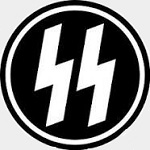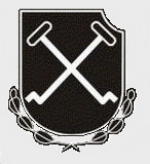Dragon DRR60021 German Late Production Sd. Kfz. 181 PzKpfw VI Tiger I Ausf. H1 Heavy Tank with Zimmerit - Red 231", schwere SS Panzerabteilung 101, Normandy, 1944 (1:72 Scale)
"The gun and armor of the Tiger were superb, making it in many ways the most formidable tank in service. Even so, it was poor in maneuver, it was slow, and its turret was a slow traverser in action. It was a tank which was, at its best, immobile in ambush, when its killing power was very frightening."
- Douglas Orgill, "German Armor"
 The Panzerkampfwagen VI Ausfuhrung H1 (Tiger H1) is the first (early-production) variant of the Tiger I heavy tank family, designed and built by Henschel and used by the German Army during World War II. It offered the German Army its first armored fighting vehicle equipped with the 88 mm Kampfwagenkanone (KwK) 36 tank gun, developed from the 88 mm Flugabwehrkanone (FlaK) 36 anti-aircraft gun. Henschel and Ferdinand Porsche were ordered on May 26th, 1941, to submit proposals for a 45-ton heavy tank that would be available by June 1942. Porsche developed an improved version of its VK 30.01 (P) prototype (which was originally intended to compete for the Panther contract), while Henschel developed two prototypes: the VK 45.01 (H) H1 with an 8.8 cm KwK36 L/56 tank gun and the VK 45.01 (H) H2 with a 7.5 cm KwK42 L/70 tank gun. The Henschel VK 45.01 (H) H1 prototype was accepted after evaluation, primarily because the Porsche VK 45.01 (P) prototype design used a petrol-electric transmission system that required large amounts of copper for the manufacture of its electrical drive train components, a strategic war material of which Germany had limited supplies.
The Panzerkampfwagen VI Ausfuhrung H1 (Tiger H1) is the first (early-production) variant of the Tiger I heavy tank family, designed and built by Henschel and used by the German Army during World War II. It offered the German Army its first armored fighting vehicle equipped with the 88 mm Kampfwagenkanone (KwK) 36 tank gun, developed from the 88 mm Flugabwehrkanone (FlaK) 36 anti-aircraft gun. Henschel and Ferdinand Porsche were ordered on May 26th, 1941, to submit proposals for a 45-ton heavy tank that would be available by June 1942. Porsche developed an improved version of its VK 30.01 (P) prototype (which was originally intended to compete for the Panther contract), while Henschel developed two prototypes: the VK 45.01 (H) H1 with an 8.8 cm KwK36 L/56 tank gun and the VK 45.01 (H) H2 with a 7.5 cm KwK42 L/70 tank gun. The Henschel VK 45.01 (H) H1 prototype was accepted after evaluation, primarily because the Porsche VK 45.01 (P) prototype design used a petrol-electric transmission system that required large amounts of copper for the manufacture of its electrical drive train components, a strategic war material of which Germany had limited supplies.
Early Tiger H1s with the Krupp-designed turret featured a high commander cupola. Later in the war, the design was modified, resulting in the Tiger E, which had a new dome-shaped cast-armor commander's cupola and a ring installed on the commander's cupola to accommodate the mounting of an anti-aircraft light machine gun. There are additionally five S-Mine dischargers on the hull-roof, three on the left side and two on the right. Two Feifel air cleaner units designed for dusty environments are located on the hull's back. Between August 1942 and August 1944, a total of 1,347 units were constructed. The Tiger I was phased out of production after August 1944 in favor of the Tiger II.
This par
This particular 1:72 scale replica of a Tiger Ausf. H1 heavy tank has been slathered with a layer of zimmerit anti-magnetic mine paste and was attached to the schewre SS Panzerabteilung 101 fighting at Normandy in the summer of 1944.
Sold Out!
Dimensions:
Length: 4-1/2-inches
Width: 2-1/4-inches
Release Date: August 2004
 Historical Account: "Hitler's Elite" - Schwere SS-Panzer Abteilung 101 was formed in July 1943 around a cadre of units from 1st SS Panzer Division Leibstandarte Adolf Hitler, which was attached to I SS Panzerkorps Leibstandarte Adolf Hitler. The unit was attached to SS Panzer Division Leibstandarte Adolf Hitler and sent to Italy in August 1943. Two of the companies were then sent to the eastern front where they remained until April 1944. The unit was assigned to 12th SS Panzer Division Hitler Jugend in the spring of 1944 where it suffered heavy losses in the Battle for Normandy. It was refitted with King tanks in September 1944, and redesignated Schwere SS-Panzer Abteilung 501. The unit fought in the failed Ardennes offensive before being sent to the Eastern front where it was eventually destroyed.
Historical Account: "Hitler's Elite" - Schwere SS-Panzer Abteilung 101 was formed in July 1943 around a cadre of units from 1st SS Panzer Division Leibstandarte Adolf Hitler, which was attached to I SS Panzerkorps Leibstandarte Adolf Hitler. The unit was attached to SS Panzer Division Leibstandarte Adolf Hitler and sent to Italy in August 1943. Two of the companies were then sent to the eastern front where they remained until April 1944. The unit was assigned to 12th SS Panzer Division Hitler Jugend in the spring of 1944 where it suffered heavy losses in the Battle for Normandy. It was refitted with King tanks in September 1944, and redesignated Schwere SS-Panzer Abteilung 501. The unit fought in the failed Ardennes offensive before being sent to the Eastern front where it was eventually destroyed.









